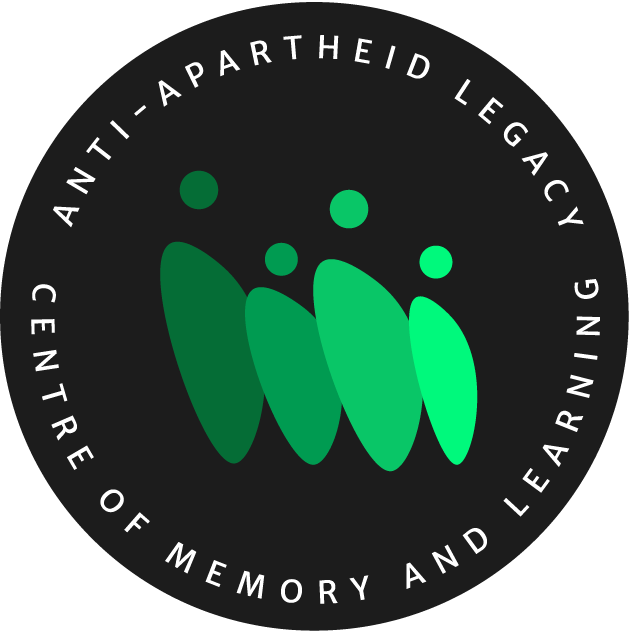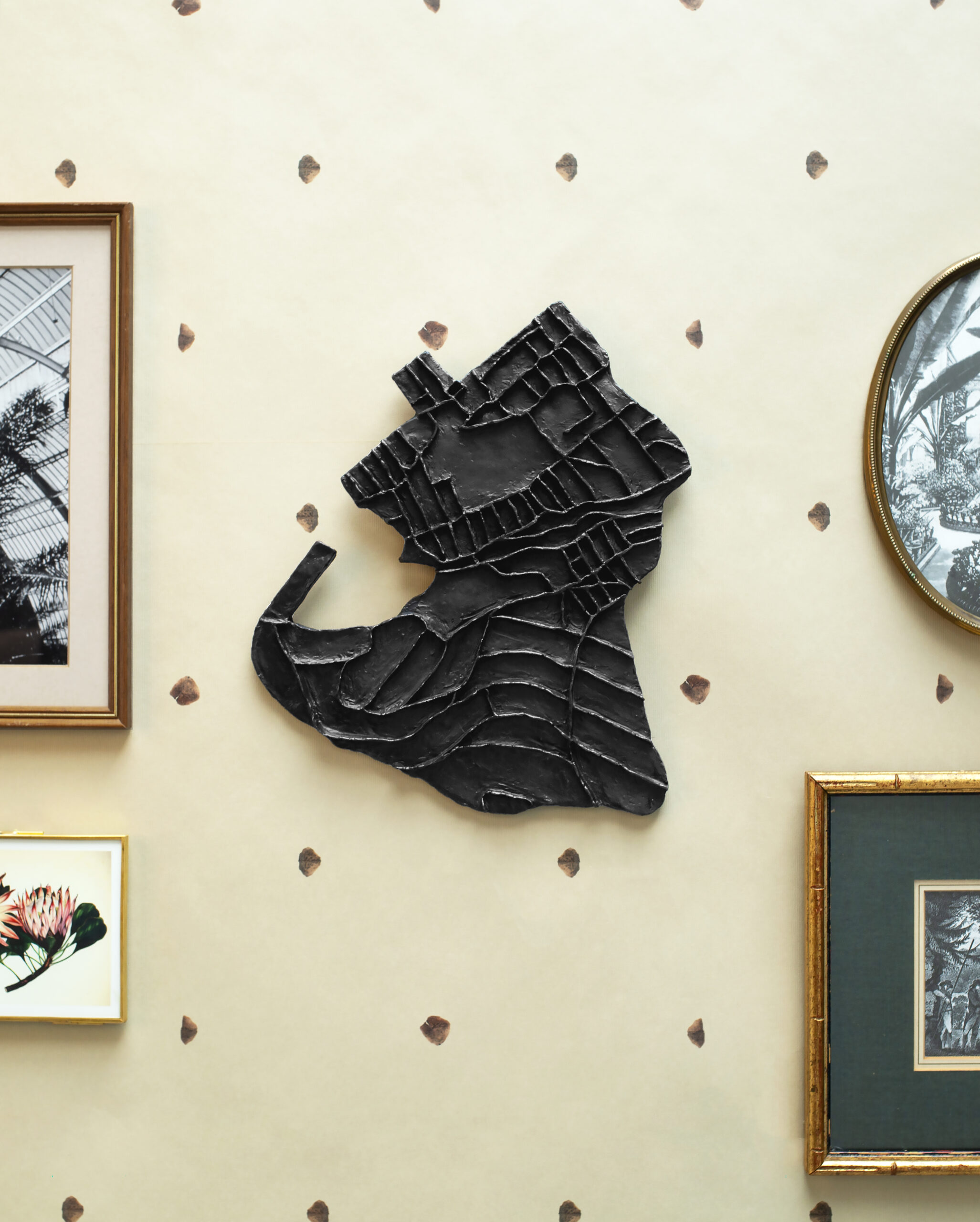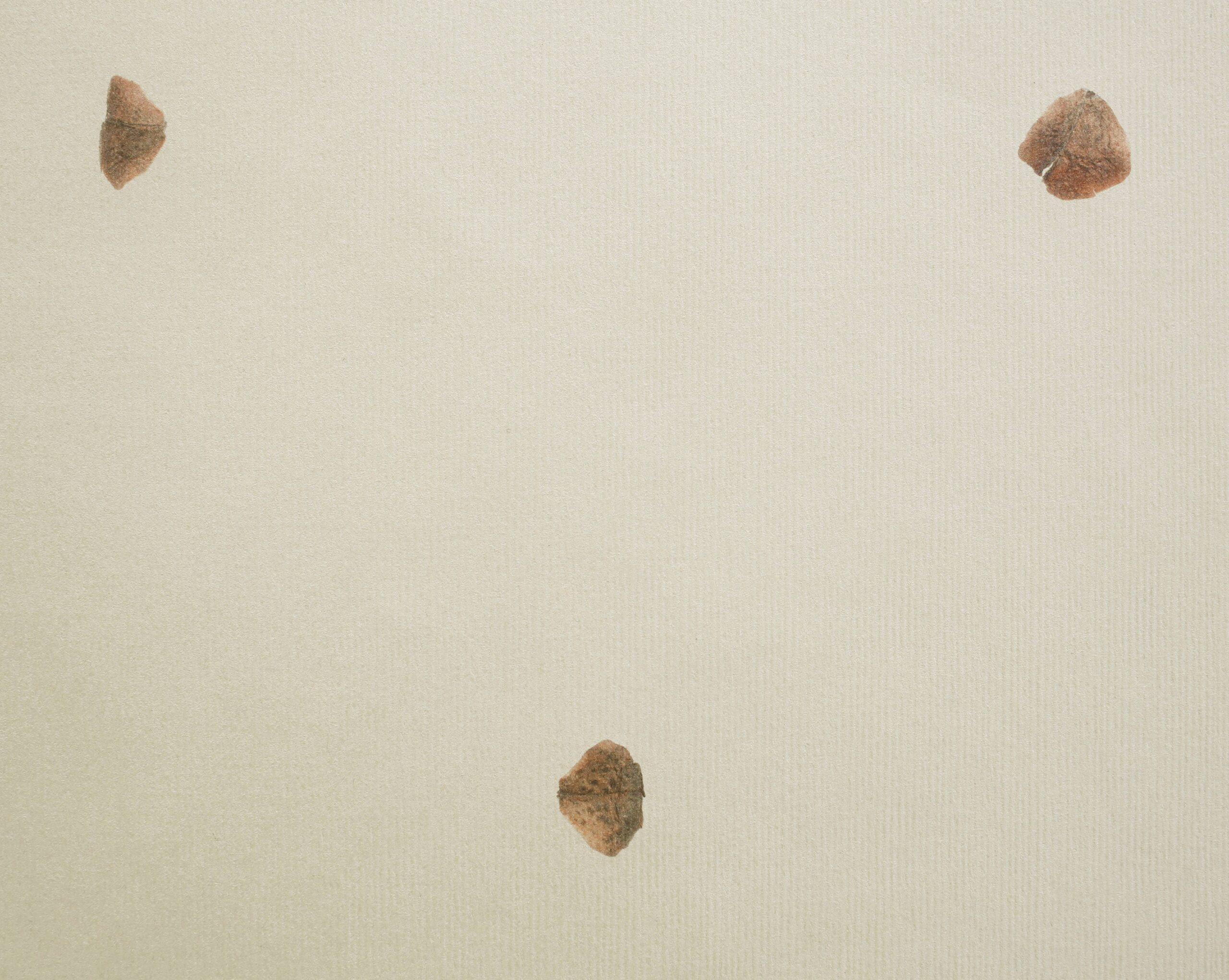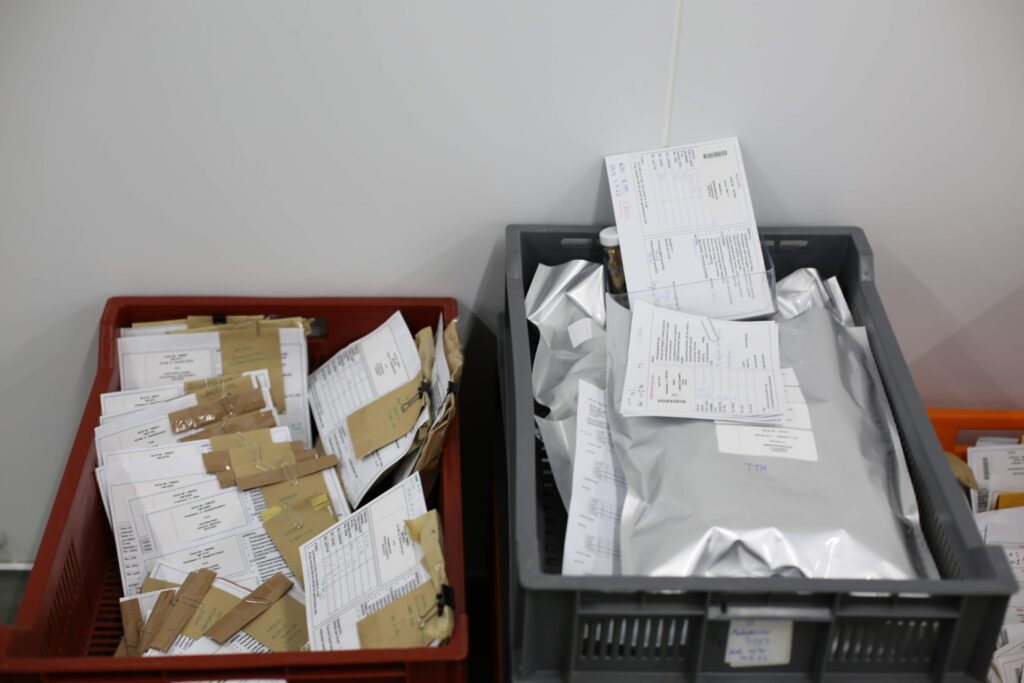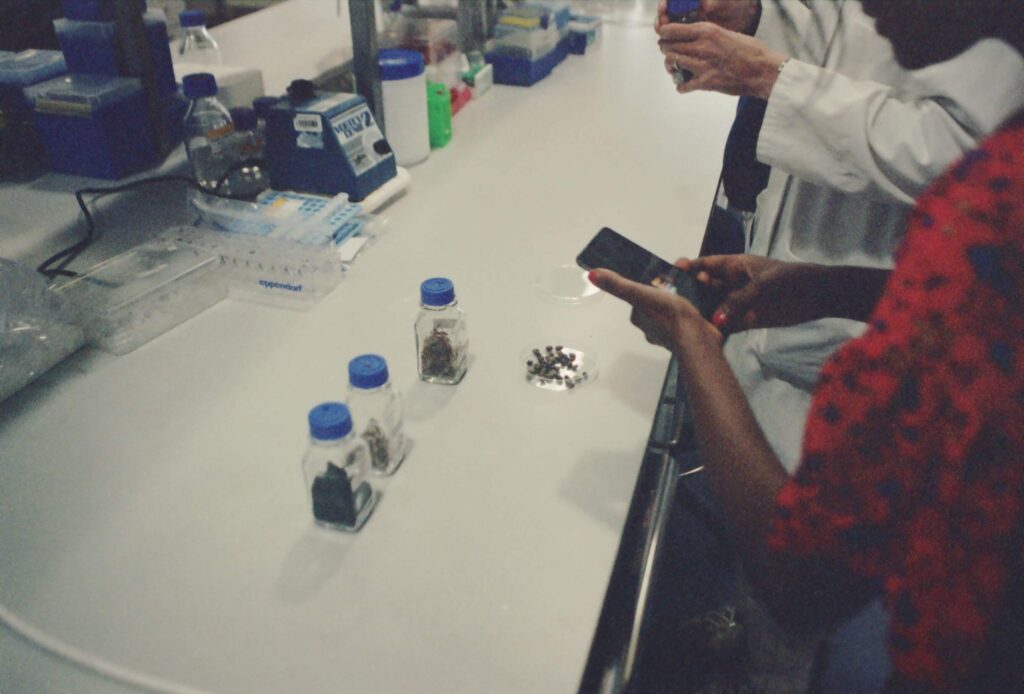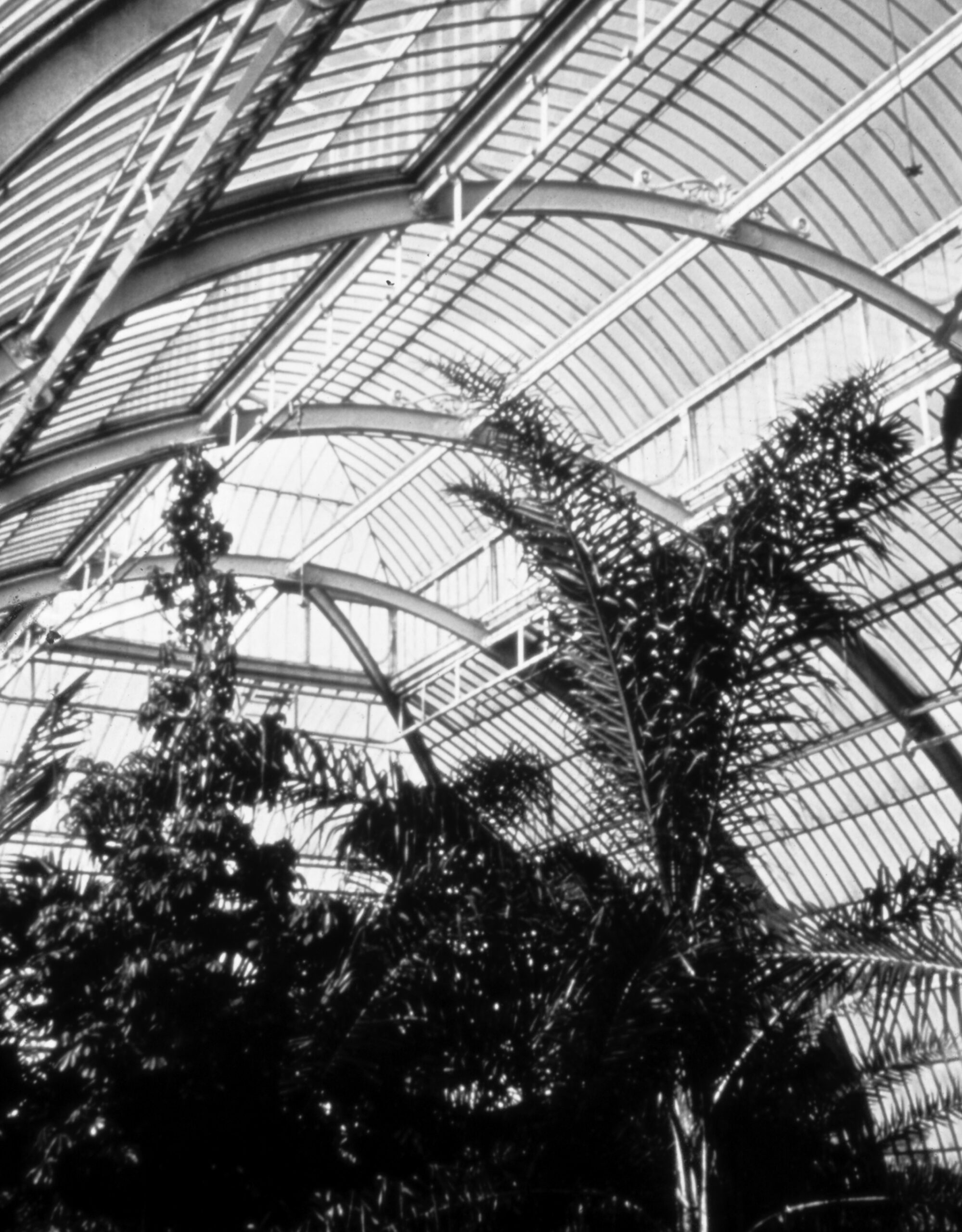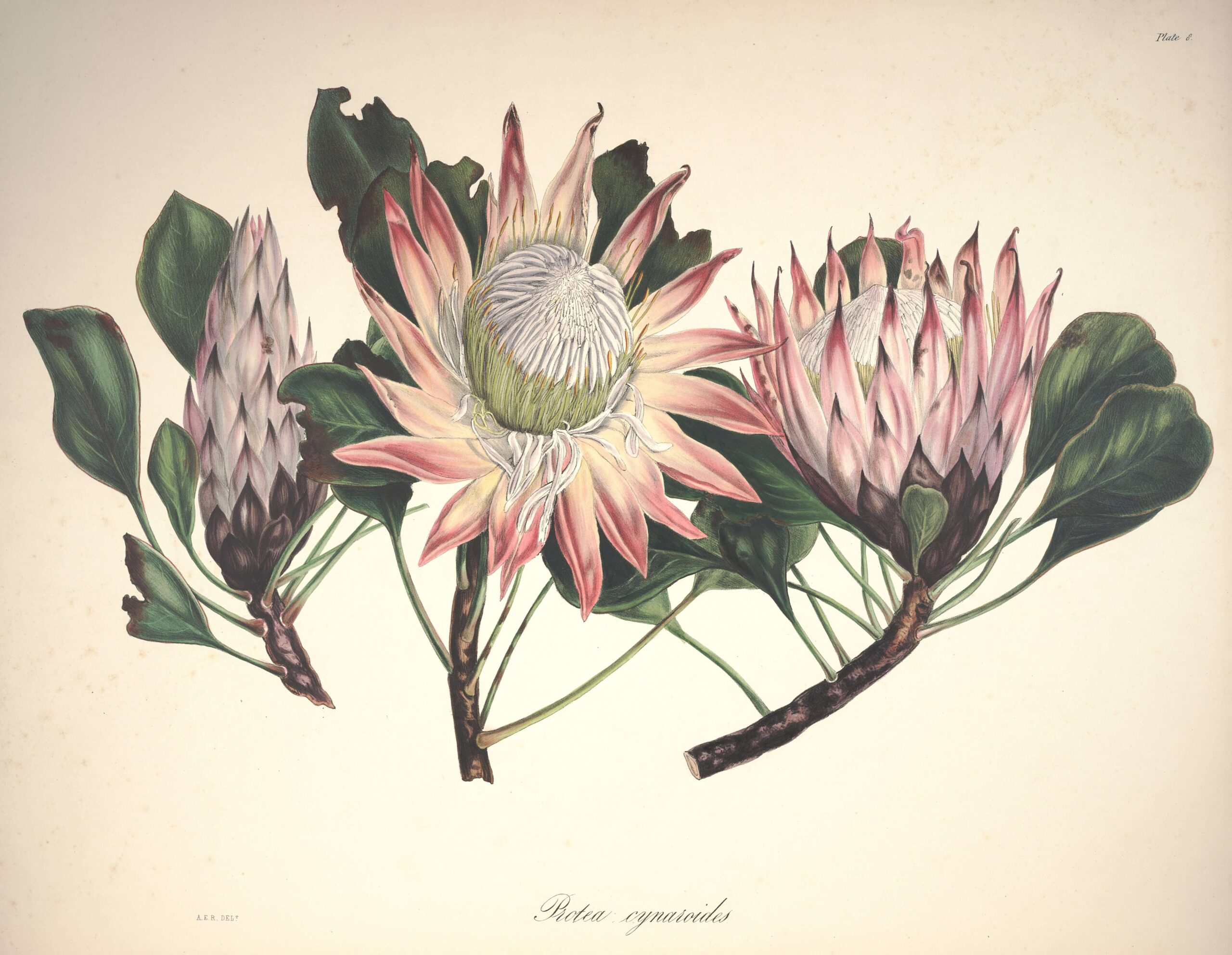Protea / Extraction, 2023; patinated bronze relief, pastel paper, picture frames.
Mae Shummo, Lucia Medina Uriarte, Ektoras Arkomanis
Protea / Extraction
Mae Shummo, Lucia Medina Uriarte, Ektoras Arkomanis
Protea / Extraction
Protea / Extraction reimagines a fragment of an early twentieth-century colonial interior somewhere in Europe or South Africa. On display are the projected self-image of wealthy colonists of that time (the adventurer, the amateur of sciences, such as botany, the collector), the penchant for classifying and exhibiting, and idyllic images of botanic gardens that conceal the labour behind their making.
Central to the installation is a trophy-like bronze relief of the outline of Protea Village, an area adjacent to Kirstenbosch, the National Botanical Garden of South Africa, located in Western Cape. In the early-twentieth century, enslaved black South African and other African workers were brought there to work in the garden. They gradually inhabited this area next to the garden, building their homes, and a community. Several decades later, in the 1950s and ‘60s, they and their descendants were expelled from the site; their homes were demolished, and Protea Village was built over. The hard materiality of the sculpture represents this concretisation of history. The streets instead of being carved, are sculpted in relief. This detail was inspired by collectors’ cases with their compartments for classifying the acquired objects (plant and insect species, fossils, cultural artefacts etc.) in colonised territories, but it also points to the irrevocability of land divisions.
Protea/Extraction, wallpaper detail: Leucadendron seeds, print on pastel paper.
The other major element in the display is the wallpaper, which comprises a simple pattern of Leucadendron seeds. These seeds belong in the Proteaceae family, which includes the national flower of South Africa, King Protea. The seeds-adorned background points to the extraction of natural resources, which underpinned the exploitation of people in South Africa and during the construction of the Kirstenbosch Botanical Gardens in particular. The wallpaper medium speaks to the commodification and aestheticisation of vital natural resources that were extracted, transported to European countries and displayed there in various forms.
And yet, the Leucadendron seeds, though tiny and seemingly fragile, are known for their tenacity, and their ability to germinate through wildfires.
There is a small void on the left side of the bronze cast. It represents the only land of Protea Village which is still negotiable for reclamation by the descendants of the displaced original inhabitants of Protea Village. This is a story not yet crystallised, and as with the seeds, an instance of resilience in the face of adversity.
January 2023
Research at the Millennium Seed Bank, Kew Gardens at Wakehurst
Making a bronze relief of the Protea Village outline
Index of framed pictures in the installation
The sculpture was cast at Bronze Age London.
The installation was photographed at the School of Art, Architecture and Design, London Metropolitan University.
The artists would like to thank the following individuals and institutions for their kind support and assistance:
Calvin Gomes, Bronze Age London
Rosemary Newton and Jo Osborne, Kew Gardens, Wakehurst
Samantha Johnston, London Metropolitan University
The Centre for Creative Arts, Culture and Engagement (CREATURE), London Metropolitan University
Arts Council England
National Lottery Heritage Fund
Barry Amiel and Norman Melburn Trust

